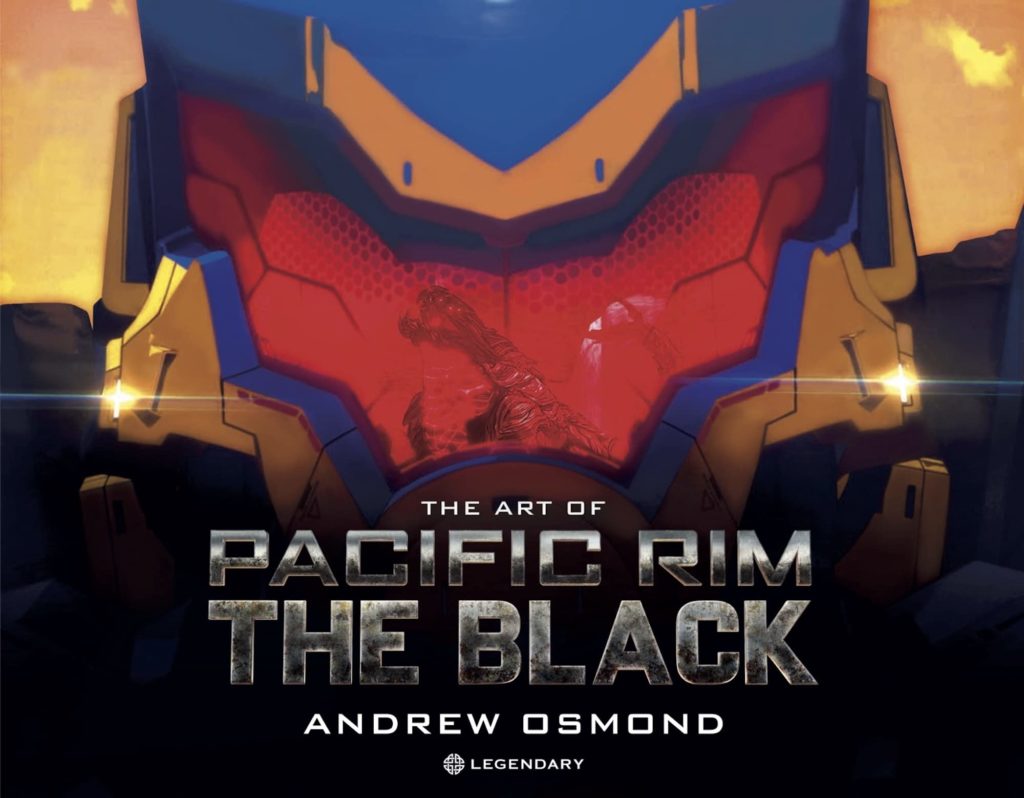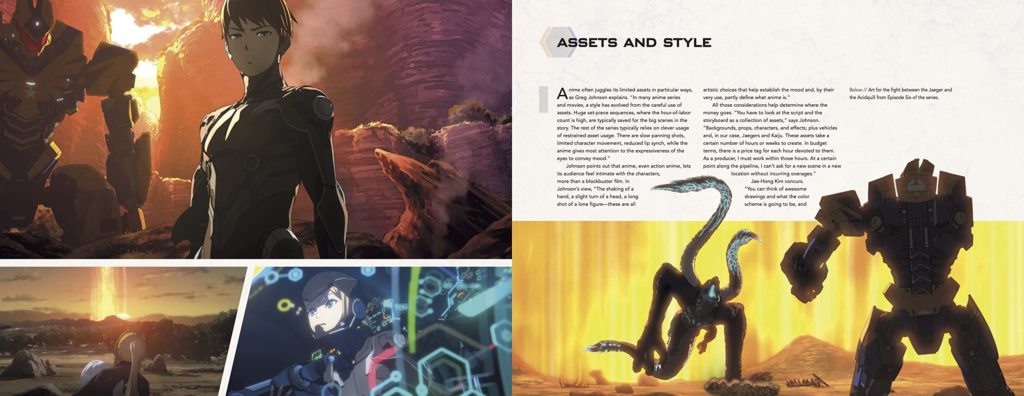Books: The Art of Pacific Rim the Black
December 1, 2022 · 0 comments
By Jonathan Clements.

Occupying a handy space between Titan Books’ habitual comics and movie work, and the more impenetrable territory of Japanese animation, Andrew Osmond’s The Art of Pacific Rim The Black is a vibrant account of the Netflix series that cashed in on Guillermo del Toro’s 2013 movie hommage to Japanese SFX films. It would have been all too easy to just throw up a few bits of artwork into a coffee table book, but Osmond goes that extra mile, grounding the Tokyo-based Polygon Pictures within the history of animation in Japan and elsewhere. He charts the studio’s journey from the Netflix original Knights of Sidonia, through several Disney adaptations, including TRON: Uprising, in order to make it the obvious choice for a spin-off from Legendary Pictures’ mecha-and-monsters franchise.
The book’s nomenclature is a clear statement of intent. This is an “Art of”, not a “Making of”, concentrating on the imagery used in bringing to the production to the screen. As a result, there is only a limited concentration on the processes behind the scenes that made the series what it is, with interview quotes leaning heavily on commentary from the producers – including Polygon’s Shuzo John Shiota, who diplomatically argues that the show’s inspirations derive not merely from 1970s tokusatsu, but from many a mecha anime show from the same period.

And how times have changed since the days when Japanese creators were mere subalterns on someone else’s show. “We could have done all the designs and the scripts here in America,” notes producer Ken Duer, “sent the package over to Japan and said, ‘Please animate.’ But if you really want to draw out the creativity and expertise of the Japanese staff, you should give them a lot more freedom and involvement in the creative process.”
Duer presents a pragmatic, animator-focussed account of way the show was written, dismissing writers without animation experience as airy fantasists who fail to consider the practicalities of bringing their ideas to the screen. For him, one of the leading achievements of The Black was the constant feedback between the Los Angeles writers and the Tokyo animation house, in order to make sure nobody was asking for the impossible. Showrunners Greg Johnson and Craig Kyle, arriving with a CV of past hits in comics adaptations, highlight the degree to which such considerations steered their pitch from day one, deliberately coming up with a storyline that avoided constant Jaeger-vs-Kaiju combat in urban settings, simply because of the expense of animating it.
For the vast bulk of the book, author Osmond takes the viewer through an episode-by-episode account of both seasons, sufficient to hang plenty of pictures off, but also to drop in further quotes from the production staff. These include those moments when the crews elected to go that extra mile, such as a scene in episode twelve where showrunner Greg Johnson calls for a single pool of water so as not to “overburden the asset count”, only for director Hiroki Hayashi to pull out all the stops and produce something more visually impressive.
Jonathan Clements is the author of Anime: A History. The Art of Pacific Rim The Black is available now from Titan Books.
Leave a Reply